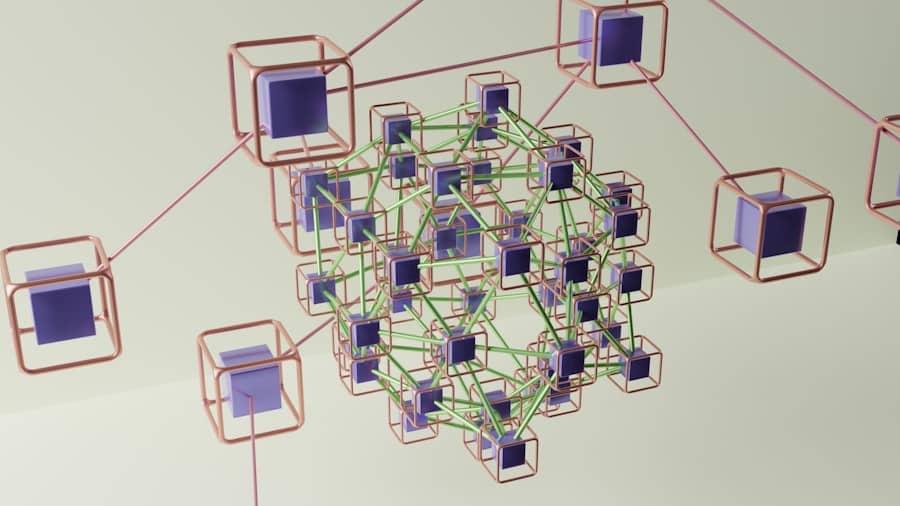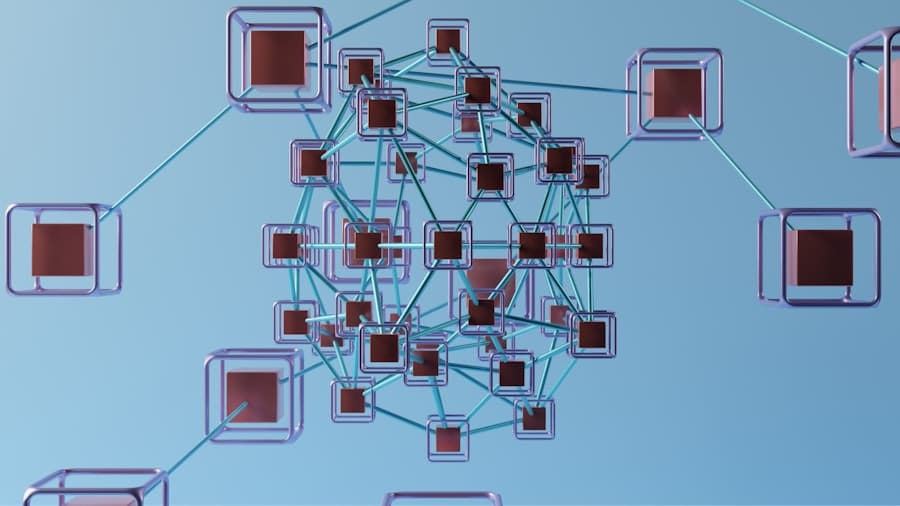In an era where digital transformation is accelerating at an unprecedented pace, organizations are increasingly recognizing the importance of robust cybersecurity measures. The rise of remote work, cloud computing, and the Internet of Things (IoT) has expanded the attack surface, making traditional security frameworks inadequate. In response to these evolving threats, Cybersecurity Mesh Architecture (CSMA) has emerged as a revolutionary approach to securing enterprise environments.
This architectural framework emphasizes a decentralized security model that allows organizations to create a more flexible and adaptive security posture. By integrating various security services and tools into a cohesive mesh, CSMA enables organizations to respond to threats in real-time while maintaining a high level of security across diverse environments. Cybersecurity Mesh Architecture is not merely a technical solution; it represents a paradigm shift in how organizations conceptualize and implement their security strategies.
Traditional perimeter-based security models are increasingly ineffective in a world where data and applications are distributed across multiple locations, including on-premises data centers, public clouds, and edge devices. CSMA addresses these challenges by promoting a more holistic view of security that prioritizes identity and context over location. This approach allows organizations to secure their assets more effectively, regardless of where they reside, thereby enhancing their overall resilience against cyber threats.
Key Takeaways
- Cybersecurity Mesh Architecture is a new approach to cybersecurity that focuses on scalability and flexibility.
- Scalability is crucial for enterprise cybersecurity as the number of devices and data continues to grow exponentially.
- Cybersecurity Mesh Architecture decentralizes security controls and distributes them closer to the people and devices that need them.
- The benefits of Cybersecurity Mesh Architecture include improved scalability, enhanced security, and better adaptability to changing environments.
- Implementing Cybersecurity Mesh Architecture in enterprises requires careful planning, integration with existing systems, and consideration of potential challenges.
The Need for Scalability in Enterprise Cybersecurity
As businesses grow and evolve, their cybersecurity needs become increasingly complex. The rapid adoption of cloud services, mobile devices, and IoT technologies has led to an explosion of endpoints that require protection.
Scalability in cybersecurity is not just about adding more resources; it involves the ability to integrate new technologies, manage diverse environments, and respond to emerging threats efficiently. Moreover, regulatory compliance and data protection laws are becoming more stringent across various industries. Organizations must ensure that their cybersecurity measures can scale to meet these requirements while also accommodating the dynamic nature of their operations.
For instance, a company that expands into new markets or introduces new products must be able to adjust its security posture accordingly. Failure to do so can result in vulnerabilities that cybercriminals can exploit, leading to data breaches and significant financial losses. Therefore, scalability is not merely a desirable feature; it is a critical necessity for modern enterprises striving to maintain robust cybersecurity.
Understanding Cybersecurity Mesh Architecture
Cybersecurity Mesh Architecture is built on the principle of decentralization, allowing organizations to create a flexible security framework that can adapt to their unique needs. At its core, CSMA focuses on the concept of identity as the new perimeter. Instead of relying solely on traditional network boundaries, CSMA emphasizes securing individual identities—whether they belong to users, devices, or applications—regardless of their location.
This shift enables organizations to implement security measures that are context-aware and tailored to specific risks. The architecture consists of interconnected security services that work together to provide comprehensive protection across the entire digital landscape. These services can include identity and access management (IAM), threat intelligence, endpoint protection, and data loss prevention (DLP), among others.
By integrating these services into a cohesive mesh, organizations can achieve greater visibility and control over their security posture. This interconnectedness allows for real-time threat detection and response, enabling organizations to mitigate risks before they escalate into significant incidents.
Benefits of Cybersecurity Mesh Architecture for Scalability
One of the most significant advantages of Cybersecurity Mesh Architecture is its inherent scalability. As organizations grow and evolve, CSMA allows them to seamlessly integrate new security tools and services without disrupting existing operations. This flexibility is crucial in today’s fast-paced business environment, where the ability to pivot quickly in response to new threats or changes in the regulatory landscape can mean the difference between success and failure.
By breaking down silos and fostering communication between various departments—such as IT, compliance, and risk management—CSMA enables a more unified approach to cybersecurity. This collaborative environment not only improves the efficiency of security operations but also ensures that all stakeholders are aligned in their understanding of risks and responsibilities.
As a result, organizations can scale their cybersecurity efforts more effectively while maintaining a consistent level of protection across all assets.
Implementing Cybersecurity Mesh Architecture in Enterprises
Implementing Cybersecurity Mesh Architecture requires a strategic approach that involves careful planning and execution. Organizations must begin by assessing their current security posture and identifying gaps that need to be addressed. This assessment should include an inventory of existing security tools and services, as well as an evaluation of how well they integrate with one another.
Understanding the current landscape is essential for determining which components of CSMA will be most beneficial for the organization. Once the assessment is complete, organizations can begin to design their cybersecurity mesh. This involves selecting the appropriate security services that align with their specific needs and integrating them into a cohesive framework.
It is crucial to prioritize interoperability among these services to ensure seamless communication and data sharing. Additionally, organizations should consider adopting cloud-based solutions that offer scalability and flexibility, allowing them to expand their security capabilities as needed without incurring significant infrastructure costs.
Challenges and Considerations in Adopting Cybersecurity Mesh Architecture
While Cybersecurity Mesh Architecture offers numerous benefits, its adoption is not without challenges. One significant hurdle is the complexity involved in integrating various security tools and services into a cohesive mesh. Organizations may face difficulties in ensuring compatibility among different solutions, particularly if they have invested in multiple vendors over time.
This complexity can lead to increased operational overhead and may require specialized skills that are not readily available within the organization. Another consideration is the cultural shift required for successful implementation. Transitioning to a decentralized security model necessitates changes in mindset among employees at all levels of the organization.
Security must be viewed as a shared responsibility rather than solely the domain of the IT department. Organizations must invest in training and awareness programs to foster a culture of security consciousness among employees, ensuring that everyone understands their role in protecting sensitive data and systems.
Case Studies of Successful Implementation of Cybersecurity Mesh Architecture
Several organizations have successfully implemented Cybersecurity Mesh Architecture, demonstrating its effectiveness in enhancing scalability and resilience against cyber threats. For instance, a leading financial institution adopted CSMA to address its growing cybersecurity challenges amid rapid digital transformation. By integrating various security services into a cohesive mesh, the organization achieved greater visibility into its security posture and improved its incident response capabilities.
As a result, it was able to reduce the time taken to detect and respond to threats significantly. Another notable example is a global retail company that faced increasing cyber threats due to its extensive online presence. By implementing Cybersecurity Mesh Architecture, the company was able to secure its e-commerce platform while maintaining flexibility in its operations.
The integration of identity management solutions allowed for more granular access controls, ensuring that only authorized personnel could access sensitive customer data. This implementation not only enhanced security but also improved customer trust and satisfaction.
Future Trends and Developments in Cybersecurity Mesh Architecture
As organizations continue to navigate an increasingly complex cybersecurity landscape, several trends are likely to shape the future of Cybersecurity Mesh Architecture. One emerging trend is the integration of artificial intelligence (AI) and machine learning (ML) into CSMA frameworks. These technologies can enhance threat detection capabilities by analyzing vast amounts of data in real-time, identifying patterns indicative of potential attacks before they occur.
Additionally, as remote work becomes more entrenched in corporate culture, there will be an increased focus on securing remote access points within the cybersecurity mesh. Organizations will need to prioritize solutions that provide secure access for remote employees while maintaining robust protection against external threats. This may involve adopting zero-trust principles that require continuous verification of user identities and device integrity.
Furthermore, as regulatory requirements continue to evolve globally, organizations will need to ensure that their Cybersecurity Mesh Architecture remains compliant with various standards and regulations. This will necessitate ongoing assessments and adjustments to security policies and practices as new laws come into effect. In conclusion, Cybersecurity Mesh Architecture represents a transformative approach to securing enterprise environments in an era marked by rapid technological change and increasing cyber threats.
Its emphasis on decentralization, scalability, and integration positions organizations to respond effectively to evolving risks while maintaining robust protection across diverse environments. As businesses continue to embrace digital transformation, adopting CSMA will be crucial for achieving long-term resilience against cyber threats.
A related article to How Cybersecurity Mesh Architecture Provides Scalability for Enterprises can be found in TechRepublic’s article on helping IT decision-makers identify technologies. This article can provide valuable insights into the latest technologies that can complement cybersecurity mesh architecture and enhance scalability for enterprises. To read more about this topic, visit TechRepublic’s article.
FAQs
What is cybersecurity mesh architecture?
Cybersecurity mesh architecture is a distributed security model that enables the security perimeter to be defined around the identity of a person or thing. It allows for the security perimeter to be defined around the identity of a person or thing, rather than the location of the network.
How does cybersecurity mesh architecture provide scalability for enterprises?
Cybersecurity mesh architecture provides scalability for enterprises by allowing security to be distributed and decentralized. This means that as the enterprise grows and changes, the security measures can easily adapt and scale to meet the new demands.
What are the benefits of cybersecurity mesh architecture for enterprises?
Some benefits of cybersecurity mesh architecture for enterprises include improved flexibility, increased resilience, and enhanced security. It also allows for a more dynamic and adaptable approach to security, which is essential in today’s rapidly changing threat landscape.
How does cybersecurity mesh architecture differ from traditional security models?
Traditional security models typically rely on a centralized approach, where security measures are concentrated at the network perimeter. In contrast, cybersecurity mesh architecture distributes security measures throughout the enterprise, allowing for a more flexible and adaptable approach to security.
What are some key considerations for implementing cybersecurity mesh architecture in an enterprise?
Key considerations for implementing cybersecurity mesh architecture in an enterprise include ensuring interoperability with existing security systems, establishing clear policies and procedures, and providing adequate training for employees. It’s also important to regularly assess and update the security measures to address new threats and vulnerabilities.



